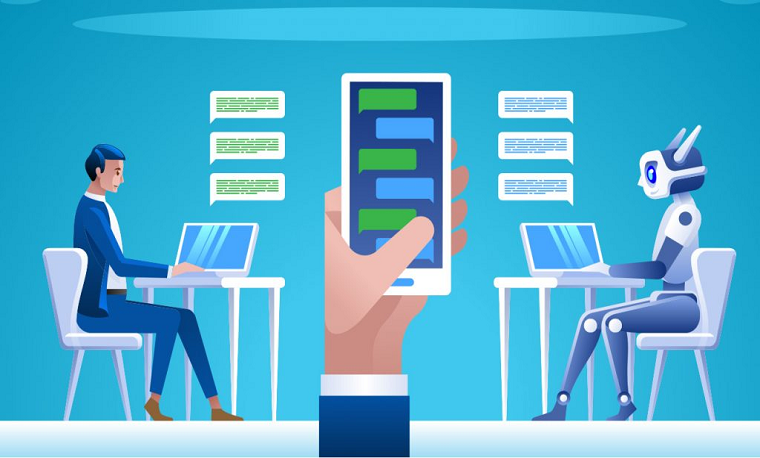Wouldn’t it be great to have customer service personnel on call 24 hours a day, seven days a week—even during holidays?
Even better, what if you could have so many people on call your customers never have to wait, regardless of how many other shoppers are currently being served?
Yes, paying the associated salaries is likely to be more than a bit unappealing. However, you can have that exact coverage for far less money with chatbots. You just have to be careful to avoid alienating customers who might prefer communicating with a living person.
These ecommerce chatbot best practices will help you do just that.

Give it a Personality
Just as you’ve infused every other aspect of your presence with the voice of your brand, your chatbot should reflect it as well. Your first opportunity to demonstrate this is in the welcome message. It’s also where you should disclose the user is communicating with a bot.
The welcome message is where you should outline the bot’s capabilities too.This will help avoid customer frustration should the user need to access information the bot is incapable of providing. You should also offer instructions for starting the conversation over if the need arises.
Finally, the bot should disclose the hours during which communication with a live person is available and make handing it off to someone simple.
Make it “Converse”
Rather than setting your bot up to follow certain rules based upon responding to specific commands, design it to interpret the user’s words. Let’s say you’re considering how to sell ebooks on your own website and you’re thinking of using bots to handle customer service.
You’ll be much better of going with an AI offering (Artificial Intelligence) so it can learn and adapt to your customers, rather than being forced to stay within the parameters a rule-based bot must. Designing your bot around a set of conversations based upon the capabilities you give it is much simpler and will produce better results for your customers.
Build in Flexibility
Remember, you’re dealing with a human being on the other side of the communication and people can be unpredictable. They might get distracted, they might change their minds, or they might just want to change the conversation altogether. If your bot is locked into following a predetermined decision tree, the exchange could get frustrating for the user.
Keep in mind people will be seeking answers, or trying to accomplish a specific task. Your goal should be to get them to the solution they’re seeking as directly as possible.
Similarly, there may be times when a conversation is interrupted and the user returns some time later to finish it up. In these cases, if the user goes inactive for 30 minutes or more, have the bot ask if they’d like to continue the conversation before timing out.
This way, the user can pick up where they left off, or discontinue the conversation. Essentially, the idea is to ensure the user has control.
Plan for Misunderstandings
There will be times when the bot simply doesn’t understand what’s being asked of it. In those scenarios you should have it offer to hand the conversation off to an operator when one is available. If the problem occurs during off hours, the bot should suggest the user try again during normal business hours.
Key among ecommerce chatbot best practices is remembering your primary goal is to serve your customers as efficiently as possible. Keep an eye on the performance of your chatbot so you can determine what’s working and what isn’t to continually fine-tune the experience for them.

